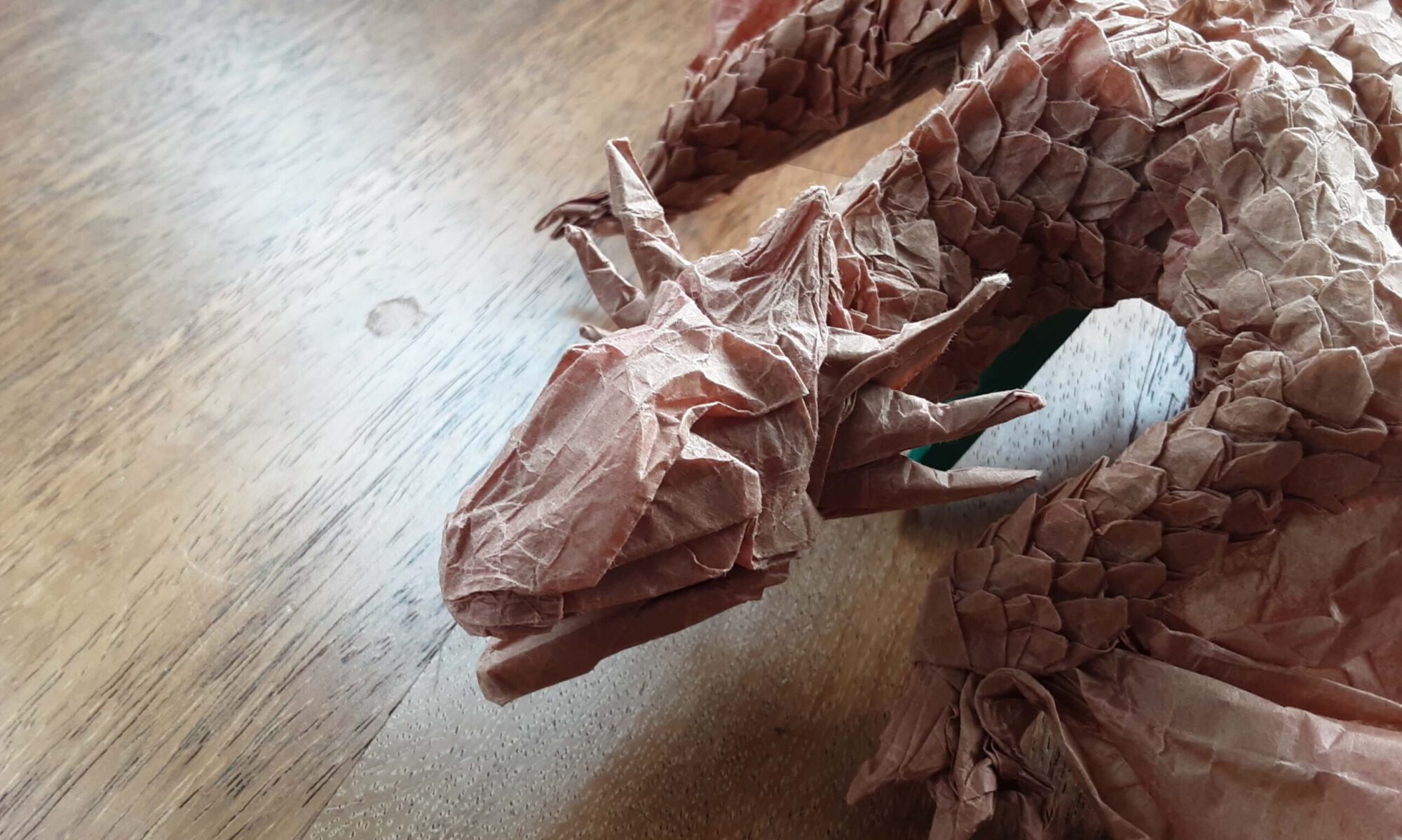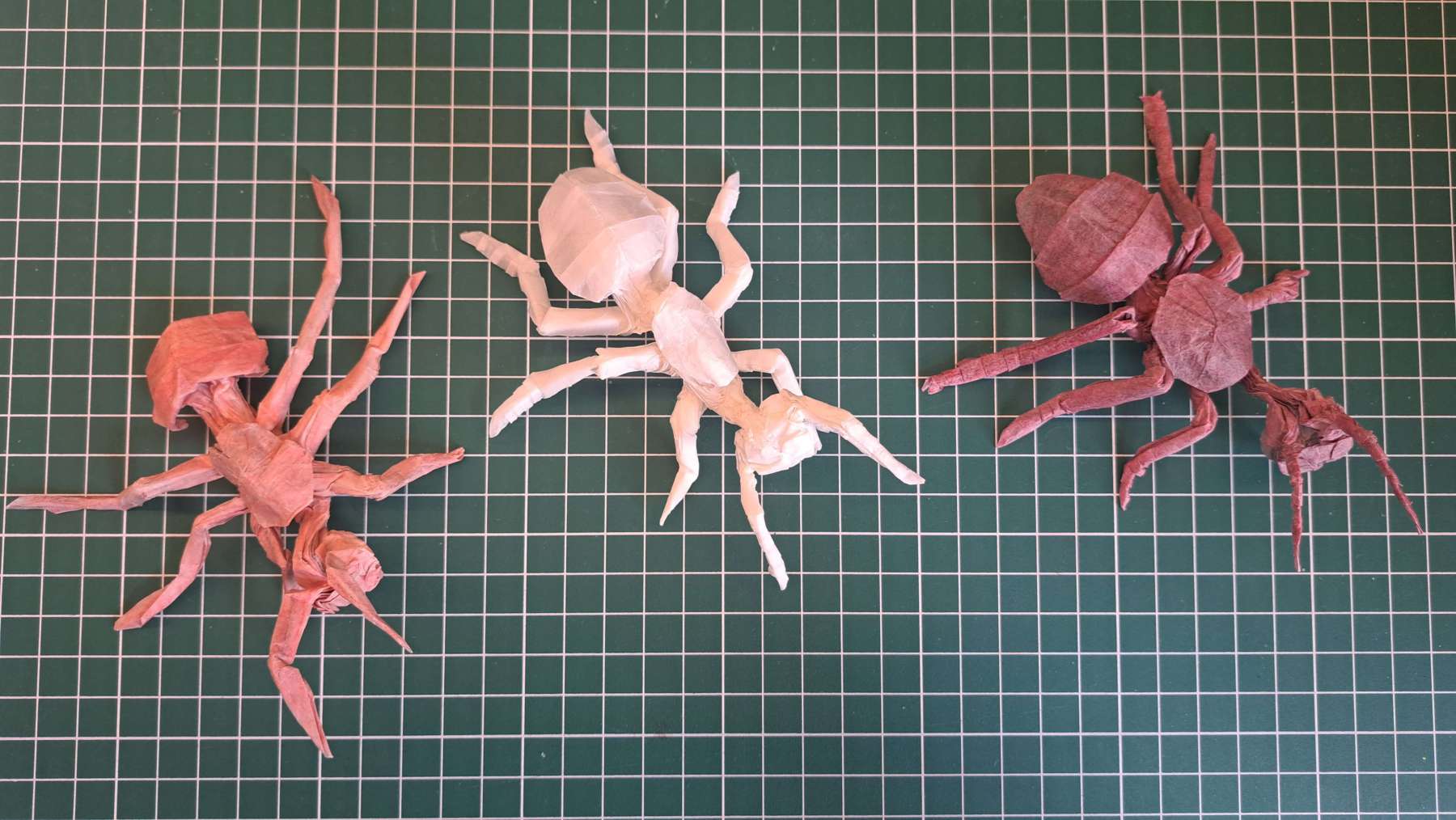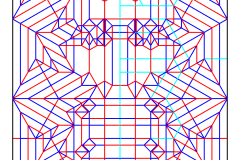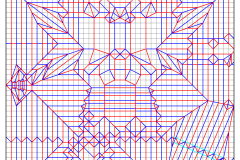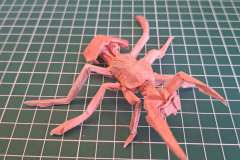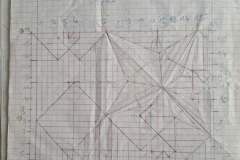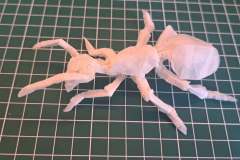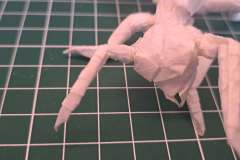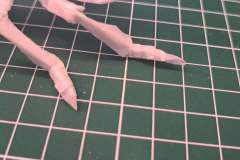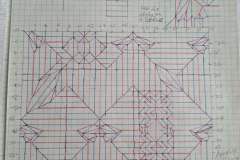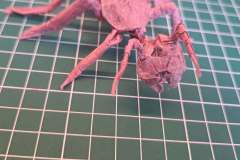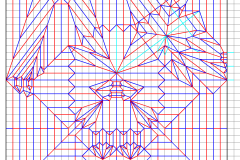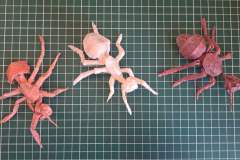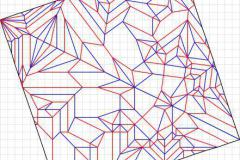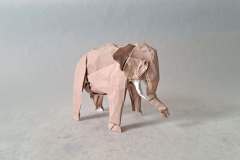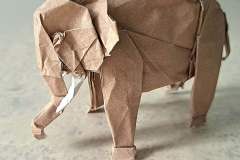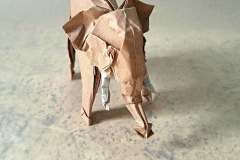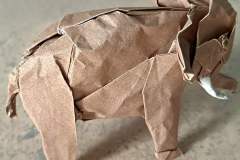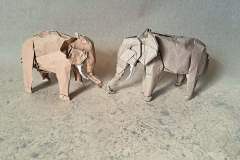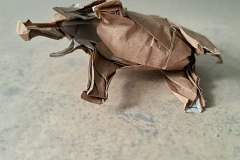When I make a new model, I sometimes have the feeling, that some potential is left unused. When I look at my old designs, I sometimes aren´t quite satisfied with them.
That´s what got me into refining my crease patterns. By now, I include the version (V) in the title of all my designs.
What does refining mean?
Refining a crease pattern means improving it by changing it´s structure.
This can be made by adding details, by making cleaner transitions etc. Sometimes I even change the general layout of the crease pattern.
When designing a new model, I mostly draw several versions of the crease pattern, before I settle for the one I will fold. The process remains the same, but refining after some time has some more factors:
- You have gained experience and actually know the (current) folded form of the model
- You know some more techniques (at least I´m still learning a little more with every new design)
How does it work? Some Guidelines
The first question for refining a crease pattern is: What do we want to achieve?
Do we want better proportions, more details or more efficiency? or something else?
Next comes: Is the general layout of the crease pattern reusable?
If yes, we first need a new general layout and refining is the same as designing the model again.
The crease pattern of the Scarab V1 and the Scarab V2
If no or if there aren´t any major changes necessary, we have to think, how the crease pattern can be altered. Where is paper used without a purpose, that could be used otherwise?
That could be empty areas in the Circle/River packing. That could be an appendage that uses more paper than it needs to fill the empty space or unefficient transitions (or areas) in the current crease pattern.
Does it make sense to use a grid with more or less units ?
Often, a larger grid helps when adding details, a smaller grid, that leads to the same model as before increases efficiency. A larger grid that uses more efficient transitions and details can also have a more efficient outcome.
These questions and the original crease pattern are my guidelines for refining a crease pattern. The most important thing remains (as always): practice
Notes:
I don´t have a special system for refining. Since my designs are variable (if I may say so myself), their crease patterns are really different.
Due to this, I can´t present you a way how to refine a cp, just my guidelines, which I keep in mind.
Sometimes, I looked at a cp I drew years ago and can´t accept the way, my former self solved some of its parts. That got me into refining 🙂
If the base of the model allows much freedom for the folder, just folding the model again will most likely result in a better version of the same design. I have tried that with my Bat V1. Even though the cp remains, every fold of this model helped me improving it. The final fold has a belly that´s far better than the first etc.
The effects of refining
The development of the ant. From version 1 to version 3.
I think you can see the difference…
Notes:
This design took me some years. Apart from theoretical knowledge, I had much more experience when making the cp of V3. Furthermore, I also learned some things about shaping…
You can use the technique of refining to modify other people´s pieces, too. One Example is my modification of Shuki Kato´s Asian Elephant.
